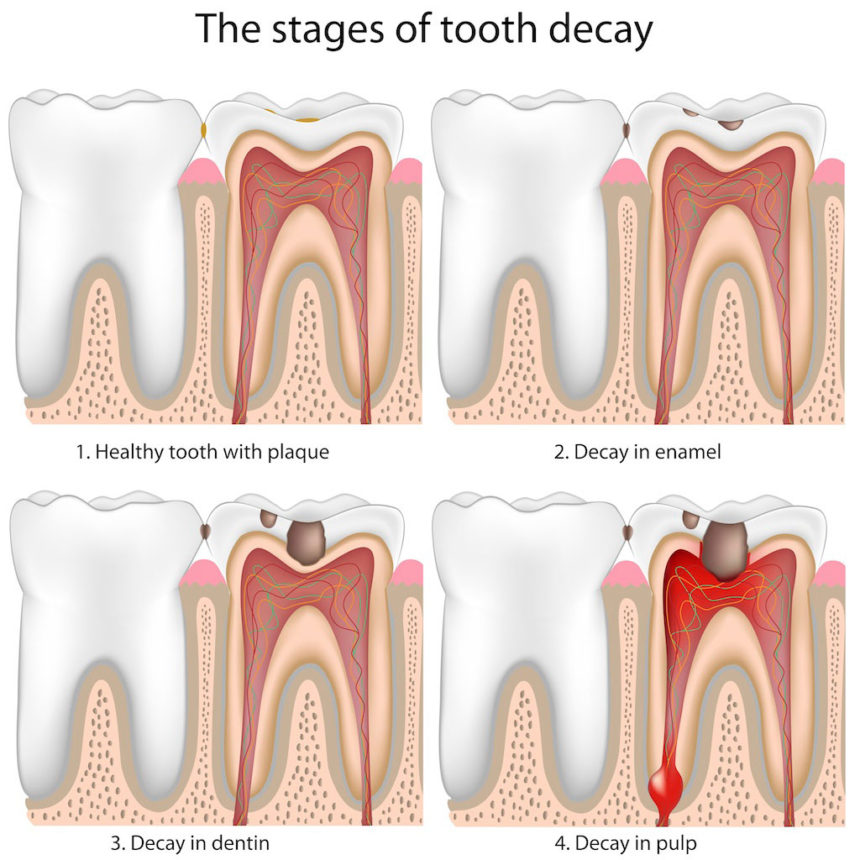Cavities are holes in the surface of teeth which that can only be repaired by a dentist. They are the result of a variety of factors, including improper brushing and flossing, and over consumption of sugary foods. Below are the various materials and approaches we take to restore a decayed tooth.
Composite (White) Fillings
A Composite filling is a white (tooth colored) resin material that bonds to tooth structure, that is used now in place of amalgam ‘silver’ fillings to provide a strong and cosmetically pleasing tooth restoration. Because a silver filling requires a “mechanical lock” to stay in place, dentist’s usually have to drill a shape larger than the decay itself. Because of the adhesive chemistry of white fillings and the fact that they bond to teeth, no additional shape has to be drilled once access to the decay has been made. The end result is usually a much smaller filling and a stronger tooth because the bonding helps “glue” or reinforce the weak parts of the tooth.
Our solutions include porcelain fillings, composite fillings, as well as inlays and onlays. Our dentist will work with you closely to give you the best dental solution for your needs and ensure that your teeth stay healthy and free of cavities and other damages.
Porcelain Inlays/Onlays
Dental Inlays and Onlays are restorations used to repair rear teeth that have mild to moderate tooth decay. Inlays and Onlays can also be used to restore teeth that have minor fractures or cracks. However, if the damage to the teeth is severe enough, a dental crown is sometimes warranted. Inlays and Onlays are usually made from porcelain, composite resin and sometimes gold. Aside from convenience, there are several advantages to having these procedures done in a single visit. Single visit restorations eliminate the need for additional appointments and injections, and your tooth is much better off not having a temporary restoration for two weeks. Temporary restorations can fall out and leak, which can lead to subsequent complications. Dental procedures can be traumatic to teeth, and eliminating a second appointment reduces the amount of stress put on a tooth.
Inlays/Onlays vs. Crowns
The difference between Inlays, Onlays and Crowns is the amount of tooth structure they replace. Restorations which cover the entire tooth are called Crowns (commonly known as caps). Whenever possible, it is better to place an Inlay or an Onlay on a tooth because it is more conservative and requires less reduction of your natural tooth. Placing a crown on a tooth requires removing more healthy tooth structure than an Inlay or Onlay, which increases the chances of the tooth requiring a root canal in the future. Inlays and Onlays also help preserve gum and periodontal health, in that they can be bonded well above the gum line, allowing for easy cleansing and less irritation. A Crown, alternatively, is a good restorative option when a tooth has had a previous root canal or the tooth has insufficient healthy tooth structure remaining to protect it from fracturing.


Leave a Reply